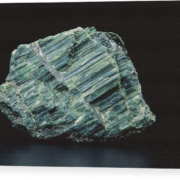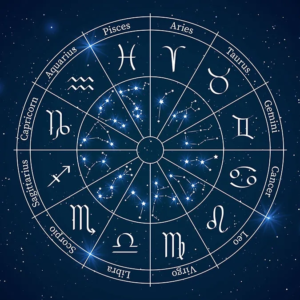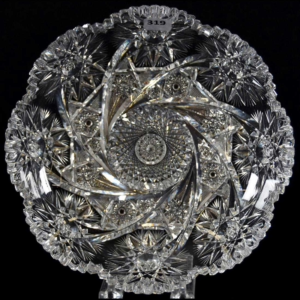Talc stone – properties, virtues & benefits
Talc stone is a soft, light rock composed mainly of talc, a silky-textured mineral. Often used in the cosmetics and pharmaceutical industries for its absorbent and soothing properties, it can also be sculpted into decorative objects or used as a lubricant. Discover the characteristics and uses of this natural stone.
TALC CHARACTERISTICS
- Chakra: Throat,Third Eye.
- Properties: Absorbent, soothing, soft, silky, lubricating.
- Astrology: Venus.
- Zodiac: Taurus, Libra.
- Elements: Earth and Water.
- Colors: White, gray, pale green.
- Hardness: 1 on the Mohs scale.
- Chemical Formula: Mg3Si4O10(OH)2.
- Associated god: /
TALC – HIS STORY
Since ancient times, a mineral called talc, whose name derives from the Persian Talq, has been used. However, its current name was assigned by Bernard Palissy, a French scientist who so named it in 1560, and the name has stuck. The world’s largest talc deposit is located in France, in the Trimouns quarry (from the Occitan Tres Mons, meaning three mountains) in the Ariège region, which produces over 400,000 tonnes a year, or 10% of the world’s output. In the heart of the Tabe massif in the Pyrenees, at an altitude of 1,800 meters, an immense vein of magnesium silicate, the main components of talc stone, has formed over the millennia and is now exploited in this huge open-Pit mine. The mine is seasonal, and is uncovered between April and November, after the snow has melted. The plant operates all year round, as stocks of raw materials are sufficient for annual production.
In the early 19th century, Ariège’s mineral-rich quarries began to be exploited on an artisanal basis, then in the early 20th century, industrial exploitation began in earnest with the arrival of modes of transport that favored increased production. The mineral was first transported by donkey, then by cable car (the longest in Europe, at 6 km), and now by freight car. The use of means of extraction such as electric shovels and industrial crushers has contributed considerably to the boom in production.
Talc is an inexpensive, fragrance-free, neutral-colored raw material that is used in many fields where its inert nature (with no effects when mixed with other elements) is particularly appreciated. Because of its long shelf life, the absence of contraindications associated with its use and the universality of its applications, it is used in the pharmaceutical industry as an exciPient, in cosmetics for its powdery, matte appearance, in papermaking as a filler, in surgery for the manufacture of many materials, and is found almost everywhere in our daily lives.
.
In 1972, Le Monde revealed an affair that tarnished talc’s reputation. More than 200 young children fell ill with symptoms such as erythema, diarrhea, convulsions and then comas, 36 of whom died and others suffered irreversible after-effects. Investigations revealed that all the sick babies had used Morhange talcum powder during the summer of 1972. Although talc itself contains no toxic substances, an excessive concentration of hexachlorophene, a powerful bactericide, was detected in the brand’s powder. Although harmless in very small quantities, this substance was lethal in the proportions found in Morhange talc. An unfortunate handling error led to the fatal mixing of the two substances. As a result, hexachlorophene was classified as toxic, and stricter regulations were introduced to limit the presence of hazardous products in cosmetics. This case may have contributed to the bad reputation talc sometimes suffers.
TALC STONE – ITS ORIGIN AND COMPOSITION
Talc is a mineral belonging to the phyllosilicate family, like micas and clays. Its tetrahedral structure forms sheets that facilitate its exploitation thanks to its cleavage. Under a microscope, layers of silica can be seen around a layer of magnesia. Talc is made up of 32% magnesium oxide, 63% silica and 5% water. However, it is hydrophobic, which explains its popularity in cosmetics to protect skin against dehydration. Talc stone has a lustre ranging from greasy to pearly, a transparency ranging from translucent to opaque, and a color ranging from white to gray or apple green. It is formed by the deformation of magnesium silicates and other similar minerals, including steatite, also known as soapstone or Briançon chalk, pyrophyllite, often used as a substitute due to its very similar composition, and soapstone, a rare mineral sometimes exposed at the surface by the progressive erosion of certain massifs. There are four types of deposits: those linked to metamorphic rocks, those linked to carbonates, those linked to ultramafic rocks and those linked to mafic rocks.
Talc deposits form in different ways depending on the nature of the surrounding rocks. The Trimons deposit, for example, formed around 300 million years ago in a fault between micachists and dolomites. Tectonics slowly pressed the two rocks together, allowing magnesium-rich water to seep through. The addition of magnesium to the dolomites created the talc deposit, while the micachists were transformed into chlorite. The extraction rate is 8 tonnes of rock for 1 tonne of talc. This is the only active deposit in France, and the largest in the world. Talc is used in many fields:
- Pharmaceutical industry: mainly as lubricants and exciPients
- Insulation: in roof coatings, it provides better weather resistance and slows the progress of fire
- Ceramics: in tiles, sanitaryware, etc., it reduces firing times thanks to its high melting point
- Paper industry: all types of paper are concerned, it is used to coat and allow rubbing without snagging
- Plastic and rubber: in automotive parts (catalytic converters, particle filters, cable sheath insulation, etc.), it is used as a filler in polypropylenes
- Food industry: as an anti-caking agent and protective coating for fruit
- Painting: it increases covering power and reduces signs of age by maintaining the smooth appearance, and it also works as an anti-corrosion agent
- Water treatment: as a clarifying agent to accelerate sedimentation of fine particles
- Cosmetics: in powder form directly to act as an antipersPirant and relieve redness and friction, as a component of powders and to add mildness to soaps and foaming gels.

TALC – VERTUS ET PROPRIÉTÉS
We now know that talcum powder has been used since the beginnings of mankind, as witnessed by the cave paintings in the Niaux caves (Ariège). Its absorbent properties make it a precious ally in cosmetics, where it is appreciated for its mattifying qualities, like clay. However, it has been at the center of debate concerning its potential carcinogenicity. Traces of toxic products such as asbestos, nickel and aluminum have been detected in its components. It should be noted that magnesium silicate does not contain these elements, but that the rocks constituting the deposits from which it is extracted may do. Some products are sold certified asbestos-free.
TALC ON THE PSYCHOLOGICAL LEVEL
Talc stone is considered effective during meditation, as it can help soothe the most intense emotions. It is particularly recommended to help manage anger, as it can help channel aggression and develop patience and tolerance.
PHYSICAL TALC
Talc isn’t just good for babies’ skin. It can also be used on adults’ hair and skin. In fact, it’s highly absorbent and can be used as an effective dry shampoo to absorb excess sebum at hair roots. It also provides a volumizing effect. It can also be used as a base to make your own loose or compact powder. Neutral in color, it works as a fixative and absorbent, providing a mattifying effect and protecting the skin from sebum shine. It is also known for its antipersPirant and soothing properties, particularly for minor skin irritations such as redness or patches caused by dePilation. A little trick is to sprinkle a little talcum powder on thighs to avoid unpleasant rubbing in summer.

TALC – CLEAN AND RECHARGE
To clean and refill a talc stone, here are the steps to follow:
Cleaning:
- Submerge talcum stone in distilled water or salt water for a few hours to purify.
- Use a soft brush to remove stubborn dirt or residue. Avoid using chemicals or abrasive cleaners that could damage the stone.
- Rinse the stone thoroughly under running water.
Loading:
- Place the talcum stone under direct sunlight for a few hours to recharge it with solar energy.
- You can also place it on a cluster of quartz crystals or amethyst geodes to recharge it with natural energy.
- Visualize or meditate on the stone’s intention for a few minutes to reinforce its power.
Repeat these cleaning and recharging steps regularly to maintain the properties and vitality of your talc stone.
WHERE DOES THE NAME TALC COME FROM?
The name “talc” comes from the Arabic word “talq”, meaning “purity”. Indeed, talc has been known since ancient times for its whiteness and purity, and has been used in many cultures as a sculpting material, decoration and even as a beauty powder. Talc is also known for its softness and silky texture, making it a popular ingredient in cosmetics and pharmaceuticals. Today, talc is mainly extracted from mines in Africa, Asia and South America.
WHICH CHAKRA DOES TALC ACT ON?
Talc is associated with the throat (Vishuddha) and third eye (Ajna) chakras. The throat chakra is linked to communication, self-expression and creativity, while the third eye chakra is linked to intuition, wisdom and perception. Talc is known for its soothing and calming properties, which can help open and balance these chakras, promoting clear communication, clear thinking and finer perception. It’s recommended to place talcum stone on these chakras during meditation or energy therapy to reap its benefits.
WHICH ASTROLOGICAL SIGN IS ASSOCIATED WITH TALC?
Talc is associated with the zodiac signs of Taurus and Libra. Taurus is an earth sign that is often associated with stability, security and sensuality, while Libra is an air sign that is associated with harmony, balance and beauty. Talc is known for its soothing, gentle and balancing properties, which can help alleviate stress and promote inner harmony. People born under the signs of Taurus and Libra can benefit from talc’s healing properties, particularly when used to meditate or practice energy healing techniques.
TALC STONE SUMMARY
Talc stone is a soft, light rock composed mainly of talc, a silky-textured mineral. It is often used in the cosmetics and pharmaceutical industries for its absorbent and soothing properties. Talc stone is associated with the throat and third eye chakras, as well as with the zodiac signs of Taurus and Libra. It is known for its soothing, gentle and balancing properties, which can help relieve stress and promote inner harmony. To reap its benefits, we recommend cleaning and recharging the talc stone regularly.


